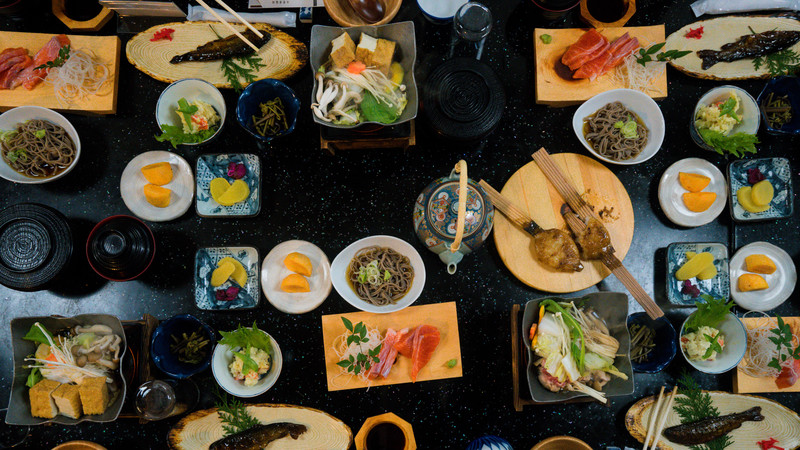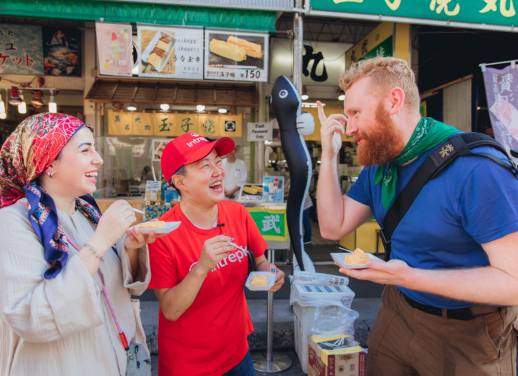For many travellers, Japan can be a tricky place to find a good meal, due to language barriers and some pretty unusual ingredients. While adventurous eaters who are willing to dive in and try just about anything won’t go hungry, some travellers struggle with not knowing what they’re actually eating.
This is where Michie comes in. Michie Hamaya has been leading Real Food Adventures in Japan for Intrepid since early 2018, and is already one of our most popular leaders. She’s a passionate foodie who loves to travel across the world, just for the food. For Michie, meals are an important daily activity that should never be missed. And in Japan, life is structured around food and eating seasonally.

Intrepid leader Michie Hamaya
“Leading food adventures is a great opportunity for me to introduce travellers to all the bizarre foods on the streets, the regional specialties in the countryside, and the ‘real’ foods that we eat locally.”
RELATED: HOW TO EAT AND DRINK LIKE A LOCAL IN JAPAN
On Intrepid’s 12-day Real Food Adventure through Japan, travellers get the chance to try a range of traditional Japanese foods, along with a few unusual dishes. We travel by train from Tokyo to Kyoto via Takayama, Kanazawa, Osaka and Koya-San, where we spend the night at a Buddhist monastery and eat traditional Sho-jin (vegetarian) cuisine. “My favourite places on this trip are Takayama and Koya-San,” Michie tells us. “Both towns have a cosy atmosphere, and the people are relaxed. The food provided at the ryokan and monastery are very simple, but local to the region.”
EXPLORE OUR RANGE OF JAPAN TOURS NOW
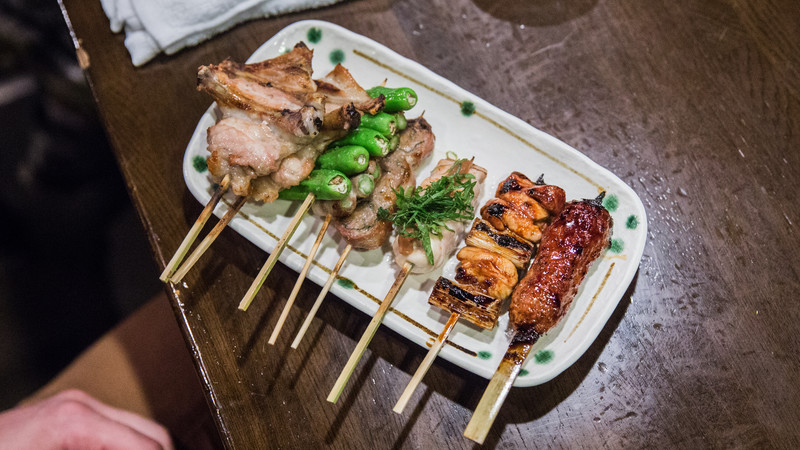
Image by Ben McNamara
Of course, we indulge in a LOT of great food along the way. Travellers can expect to eat Hida and Kobe beef, different kinds of ramen noodles – including Fire Ramen in Kyoto, where burning oil is poured over the soy-based noodle broth just before serving – takoyaki balls (octopus dumplings), Japanese curries, matcha soft serves, mochi desserts, and, of course, fresh sushi at the market.
One of the more unusual delicacies people on Michie’s trips have the opportunity to try is Tako Tamago, a famous street food snack found in Kyoto and Osaka markets. What is it? A baby octopus, simmered in a soy-based sauce, with a hard-boiled quail’s egg stuffed into its head, served on a stick. And it’s surprisingly delicious – chewy, sticky, salty and sweet.
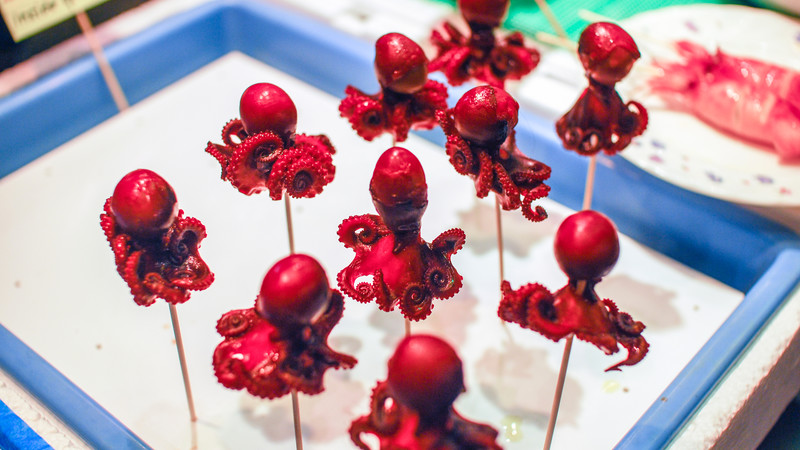
Image by Phil Lees
While it may seem like there are a lot of strict rules around eating when you’re in Japan, Michie explains that most of them stem from manners and respect. “I always share my knowledge with my passengers, so they know what the correct etiquette is. Big no-no’s are not standing your chopsticks in your food, as it resembles a funeral offering. Passing food from your chopsticks to someone else’s is also frowned upon, as is holding your chopsticks or pointing them while you’re talking; place them in the chopstick stand instead.”
RELATED: EVERYTHING YOU NEED TO KNOW ABOUT ETIQUETTE IN JAPAN
One meal that often baffles first-time visitors to Japan is breakfast. Is there a ‘right’ way to eat it?
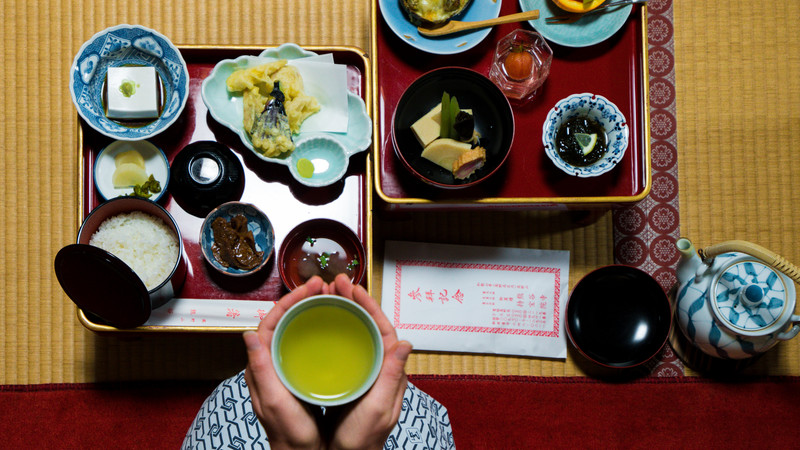
Image by Brook Sabin
“Most of us grew up being taught to start with the soup (usually miso or a clear broth) to wet our chopsticks so they don’t stick to the rice, then move onto the appetizers, like natto (fermented soy beans), pickles, tofu and seaweed, and then the main dish, which is usually fish. Rice accompanies all the dishes. It’s fine to move back and forth between different dishes, instead of finishing something and moving onto the next. Changing flavours is OK.”
SUBSCRIBE TO INTREPID’S NEWSLETTER FOR TRAVEL TIPS, COMPETITIONS, GIVEAWAYS & MORE
Japan is famous for its abundance of fresh fish and fish-based condiments. Dashi, a fundamental ingredient in Japanese cooking, is made using bonito flakes (which is derived from tuna) or sardines, and is used in just about everything. Does this make things hard for vegetarian travellers?
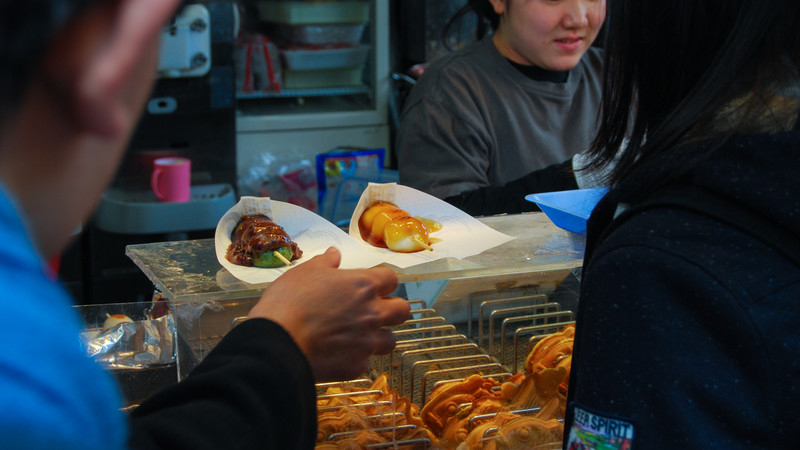
Image by Phil Lees
“We make sure that our vegetarian and vegan passengers are well looked after, and that no one leaves hungry. The Sho-jin cuisine offered in Koya-san is delicious, and everyone likes trying all the different types of tofu that Kyoto specialises in. We also eat tasty mountain vegetables, vegetarian okonomiyaki, pounded rice desserts… the list goes on!”.
RELATED: VEGETARIAN OR VEGAN? HERE’S HOW TO EAT YOUR WAY AROUND JAPAN
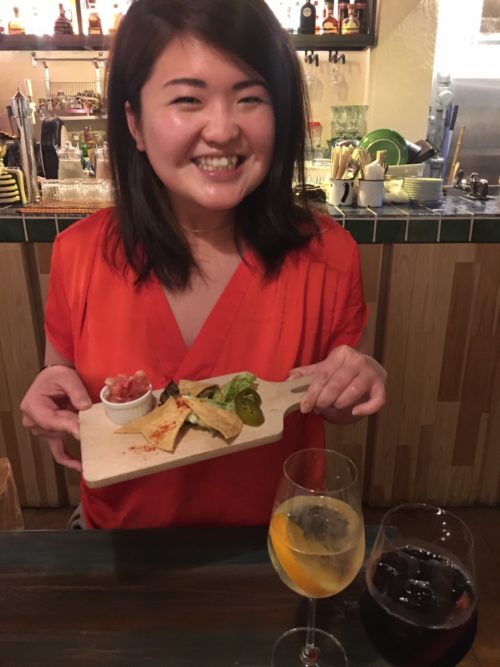
Smiling Michie!
For someone who makes a living sharing culinary experiences with travellers, what’s Michie’s favourite thing to eat in Japan?
“A home-cooked meal from my mother. She makes the best miso ever!”.
Interested in eating EVERYTHING Japan has to offer on a 12-day Real Food Adventure? Find out more here.
Feature image by Brook Sabin.

